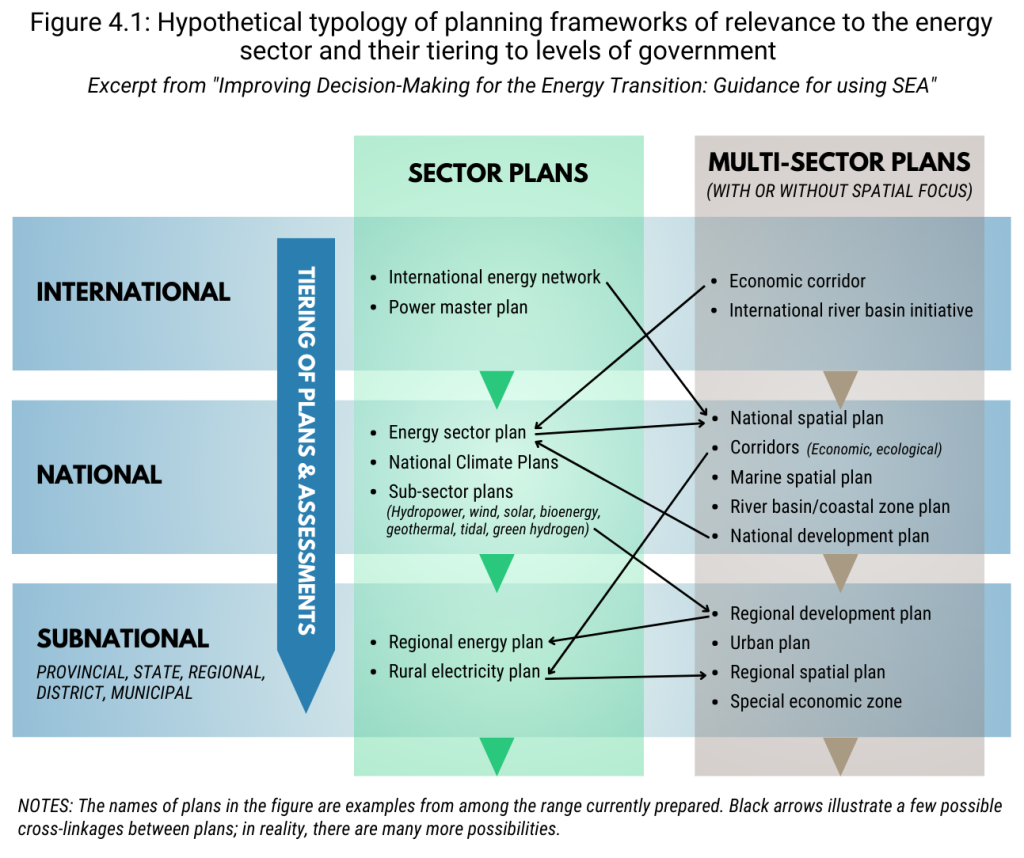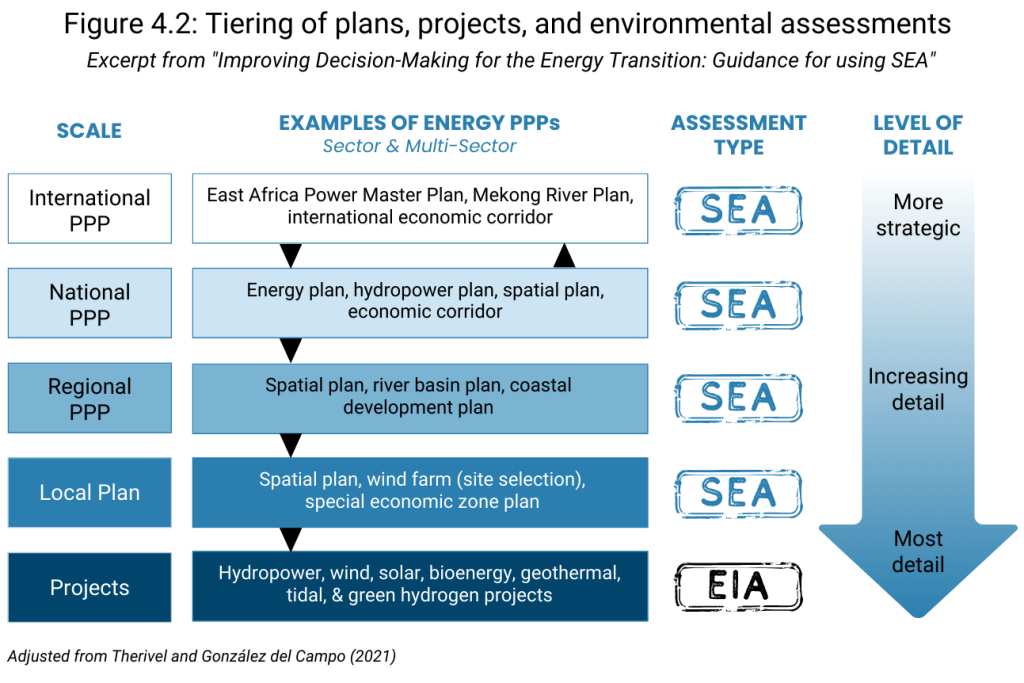Improving Decision-Making for the Energy Transition: Guidance for Using Strategic Environmental Assessment
Chapter 4 focuses on how Strategic Environmental Assessment (SEA) can guide the development and integration of national and regional energy policies, plans, and programs (PPPs). It addresses the challenges of energy planning, including the transition from fossil fuels to renewable energy sources, and the need for cross-sectoral integration to ensure sustainability and efficiency. The benefits of SEA are shown in aligning energy policies with environmental, social, and economic goals. It highlights how SEA can link with spatial planning and how it can address issues like climate change, biodiversity, and equitable energy access, especially for marginalized populations. The chapter also underscores the importance of stakeholder engagement and the challenges of implementing energy PPPs in a just and sustainable manner, particularly in countries facing complex planning frameworks.


The global shift from fossil fuels to renewable energy is accelerating as nations seek to address climate change and reduce greenhouse gas emissions. Solar and wind power are being deployed rapidly, outpacing other energy sources. However, the transition brings complex challenges that involve balancing energy demands with environmental, social and economic factors.
Traditionally, energy planning focused on technical and economic considerations, but it now requires a broader approach. Environmental and socio-economic factors, including impacts on vulnerable populations, must be integrated into decision-making. National and regional energy policies, plans and programs (PPPs) are key tools for guiding this transition, and Strategic Environmental Assessments (SEAs) provide a framework for making these plans more sustainable and inclusive.
Key Challenges in Energy Planning
Countries face increasing pressure to develop renewable energy while maintaining energy security. The growing demand for land for energy infrastructure, such as solar and wind farms, highlights the need for spatial planning. Additionally, the reliance on a mix of fossil fuels and renewable energy will continue during the transition, which requires thoughtful integration of multiple energy sources.
Benefits of Cross-Sectoral Integration
Cross-sectoral integration in energy planning offers multiple benefits, including increased efficiency, economic savings and resilience. For example, using excess industrial heat for district heating or employing electric vehicles for energy storage can enhance overall system sustainability. SEAs play a critical role in aligning energy policies with broader environmental and social goals, ensuring that policies not only meet energy demand but also address issues like biodiversity loss, water use, and community impacts.
Role of SEAs in Energy PPPs
SEAs provide essential environmental and socio-economic data, facilitating better coordination between energy and other sectors such as agriculture, transportation, and land use. SEAs encourage public participation and stakeholder engagement, ensuring that energy policies and plans reflect the interests of affected communities. Moreover, they help identify the cumulative impacts of energy development on ecosystems and society, promoting more sustainable solutions.
Environmental and Social Considerations
The energy transition is driving increased conversion of land for renewable energy projects, which can displace communities and disrupt ecosystems. SEAs help address these concerns by assessing potential impacts on biodiversity, water resources, communities, and cultural heritage. Energy policies must also prioritize reducing greenhouse gas emissions and promoting equitable access to energy, especially for marginalized populations.
Conclusion
As countries develop their energy PPPs, SEAs offer a valuable tool for ensuring that the energy transition is not only environmentally sustainable but also socially inclusive. By incorporating stakeholder input and addressing cross-sectoral impacts into energy plans, SEAs can help governments navigate the complexities of transitioning to renewable energy while balancing economic, environmental, and social priorities.